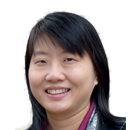Many pregnant women avoid conventional drugs because of possible adverse effects on their unborn child.
They turn to alternative remedies in the belief that they are safer. Here’s an insight into therapies that are effective and safe for use during pregnancy.

Alternatives remedies typically include herbal therapy, acupuncture, acupressure, massage, yoga and pilates.
As they are natural, they are often assumed to be harmless, but this is not true as many herbs have harmful or toxic properties. Many herbs must not be used during pregnancy due to toxic effects on the foetus, or because they may induce labour leading to miscarriages or pre-term labour.
Herbal medications do not have to undergo testing and regulations, and may contain undeclared ingredients. Conventional medicines, on the other hand, have pregnancy safety categories, classified according to the patient benefit to foetal risk ratio. Only those classified as safe are used in pregnancy.
Nausea
More than half of pregnant women will experience nausea during the first trimester with varying severity. Oral intake of pyridoxine (vitamin B6) has been found to improve severe vomiting and is commonly prescribed in the first trimester. Although there are safe anti-vomiting medications, many women would rather try alternative therapy. Ginger is a common herbal remedy used. Six studies have concluded that the use of ginger reduces the nausea and vomiting associated with pregnancy. A dosage of less than 1g per day does not have any adverse effect on the foetus. However, prolonged use of ginger therapy is not advisable as it has some anticoagulant properties that may lead to abnormal or profuse bleeding. Other herbs often tried include chamomile, peppermint and raspberry leaf, but there are no clinical trials that can ascertain their efficacy.
In Traditional Chinese Medicine (TCM), numerous studies have shown the effectiveness of acupuncture of neiguan (PC6), an acupoint located in the depression between the two tendons running from your wrist to your elbow, approximately three finger breadths from the wrist crease, for treatment of nausea. Self-treatment is possible with acupressure and wristbands that apply pressure to these points are available and commonly marketed for prevention of motion sickness. According to TCM theory, nausea occurs due to disharmony between the functions of the different organs and abnormal flow of qi. Therefore, the acupuncturist may include stimulation of other acupoints, depending on the diagnosis.
Backache
This is another common problem affecting one- to two-thirds of pregnant women. Prenatal pilates, yoga and stretching exercise have been found to reduce backache by 60%. Five studies show that yoga leads to significantly greater reduction in lower back pain compared to conventional therapy. However, it should be done under proper supervision as there are many poses and exercises that should be avoided in pregnancy.
Acupuncture was also found to reduce backache by 60%. Results from a big trial indicate that acupuncture seems to alleviate low-back and pelvic pain during pregnancy, increase the capacity for physical activities and diminish the need for drugs. This must be done by experienced acupuncturists as there are many points to be avoided, such as those that may cause contractions or those on the abdomen which may be dangerous when needled too deeply.
Breech position
At term, 3% of foetuses will be in the breech position requiring delivery via caesarean section. An interesting therapy is moxibustion of zhiyin (BL67) located near the lateral corner of the nail of the little toe. A study of 357 women with breech presentation showed a successful cephalic version rate of 92% in the moxibustion group versus 73% in the control group.
Alternative therapy is herapy that is used instead of conventional therapy, while complementary therapy is used alongside conventional therapy.
With more research into the safety and efficacy of these therapies, we hope to achieve integrative therapy to provide patients with the best treatment options.







